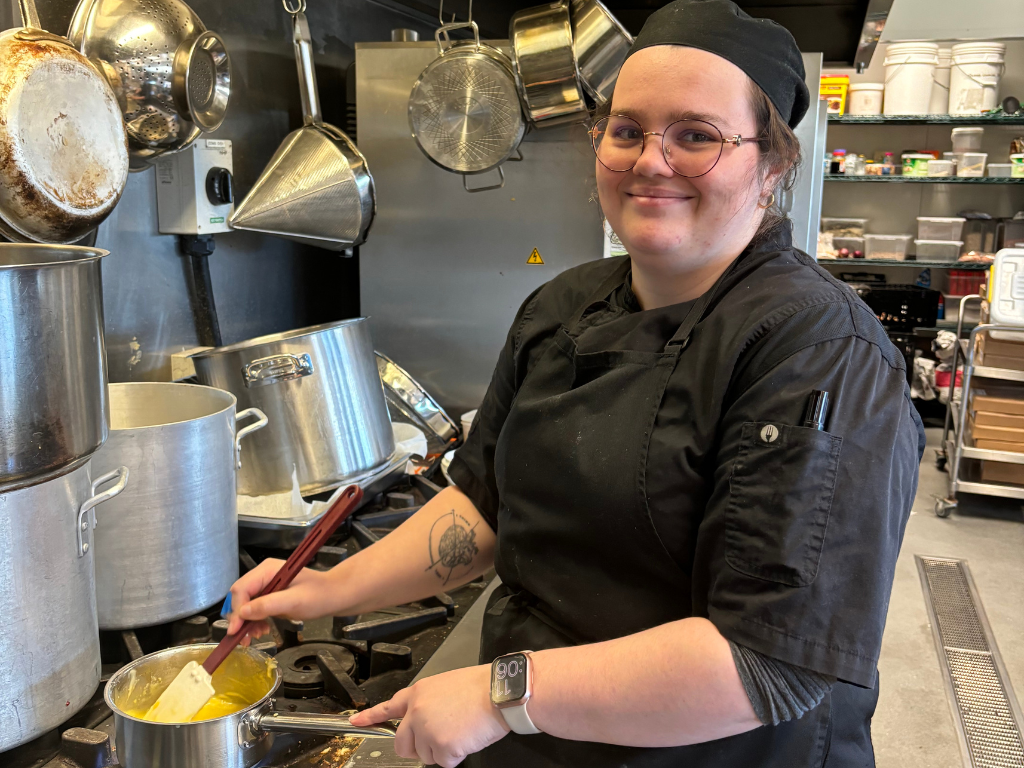One-in-two Tasmanians have missed meals, compromised on food choices, or used credit to buy food, according to the latest University of Tasmania report on food insecurity.
The 2022 report shows food insecurity has doubled in the past 12 months.
Food insecurity is when people or households struggle to put enough healthy food on the table every day because of a lack of money or resources.
The report found:
- One in two (51%) of Tasmanian households has experienced food insecurity over the previous month. This is nearly double the rate recorded in May 2021 (27%).
- 7% experienced marginal food security (anxiety over a shortage of food in the house), similar to the levels reported in 2021.
- 23% have low food security (reduced quality and variety of food eaten), double the levels reported in 2021.
- 20% have very low food security (regularly skipping meals and going hungry), nearly triple the levels reported in 2021.
Loaves and Fishes Tasmanian distributes up to 9000 ready-made meals and 30 tonnes of fresh produce each week to more than 250 food partners who say demand for food relief has doubled in the past year.
All are reporting on the changing face of food insecurity, with more double-income families requiring help for the first time.
Loaves and Fishes Tasmania CEO Andrew Hillier, said there was unprecedented demand for food, and encouraged Tasmanians to give generously to our annual Christmas appeal.
“Christmas is a time of added stress to already struggling families,” he said.
“The expectation of special festive treats, presents, decorations and all the other trappings of Christmas is disheartening for those already going without meals or having to choose poorer quality food.”
Anti-Poverty Week reports about 1 in 6 Australian children are living in poverty, with around 20,000 of the most disadvantaged under 18s living in Tasmania.
Various reports, from the Commissioner for Children and Young People and the UTAS Tasmania Project (Is Food Insecurity the New Normal in Tasmania?) have highlighted the disproportionate number of Tasmanian children and families living in poverty.
The UTAS Tasmania Project report says children, children living in single-parent families, Aboriginal and Torres Strait Islander children, and children living in families where there is disability, are among the poorest in the State.
Dropping off the Edge’s 2021 report says of Tasmania: “Disadvantage is disproportionately located in a small number of communities which experience high and persistent rates of family violence, prison contact, a lack of internet availability at home, and low incomes.”
Six of the 10 most disadvantaged communities are located around Hobart. The top 10, according to Dropping off the Edge, are Acton-Upper Burnie, Bridgewater-Gagebrook, East Devonport, Glenorchy, Mornington-Warrane, New Norfolk, Newnham-Mayfield, Ravenswood, Risdon Vale and Rokeby.
Other regional and rural areas doing it tough include the West and East Coasts, Scottsdale, Central Highlands, Sheffield, Railton, and Ulverstone, and the Central Midlands.
By Paul O’Rourke
More Stories like this…
Alanna rises above the pain to deliver food and hope
Loaves and Fishes kitchen manager Alanna Hodgetts is an outstanding performer [...]
Short, sharp swim helps nourish our state
Join us in taking a short, sharp swim to mark the [...]
NSW Christian community serving Tassie’s vulnerable
A group of students and leaders from a rural NSW Christian [...]





